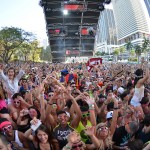In my book, Bridging Cultures, I describe two factors that gave me access to engaging with different cultural contexts and creating ‘bridging’ social networks. The first was a mindset, and the second was the circumstances in which social interaction took place. I identified certain key public spaces where opportunities for interaction were present, what I called circumstances. These circumstances were of two types. The first was the nature of the public space and the second was the presence of peers that invited me in to a social network. This blog looks at the qualities of these public spaces that support social interaction. In the previous blog, we established that public space is increasingly being considered in terms of its sociability capacity rather than its physical properties.
Two general types of social interaction in public open spaces can be identified: casual social encounters, such as chance meetings on a street, and organised social events and activities, for instance, a carnival in a park. The opportunity for informal interaction, or weak ties, is one of the most valued aspects of public open spaces. Casual encounters range from meetings with friends and neighbours in residential areas to brief exchanges with strangers in markets and shopping streets. But public space is not only for social interaction. It can also provide a place for relief, reflection, and retreat. Casual social interaction can itself be divided into two types: routine encounters and serendipitous encounters. Routine social encounters occur on a regular basis and are pre-arranged or occur in a set place and at a set time. These days many of these routine social encounters are arranged by technologically-enabled communication such as mobile phones, websites, social networking sites and Mobile Apps. However, sometimes routine encounters are both unorganised and unmediated while being more or less anticipated. These encounters often help to maintain loose ties between neighbours and familiar strangers but also provide the first step towards friendships. Routine meetings between people take place where people’s everyday paths are most likely to cross: semi-domestic spaces (such as forecourts to flats and houses), residential streets, local shopping centres, the street outside a local mosque or a small park next to a primary school. One of the key qualities of these spaces is the opportunity and freedom to linger. Serendipitous encounters are the result of both regular and occasional use of spaces. Unexpected meetings are associated with particular spaces that enhance sociability. Places located outside the immediate neighbourhood arena that draw a greater number of people, such as a market or a main street, are more likely to be settings for serendipitous encounters.
There are a number of key circumstances that underpin successful socially-enabling public spaces; familiarity, proximity, regular use that meets everyday needs; endurance, freedom to linger, available facilities, and physical characteristics.
Casual encounters are more likely to occur in places that are familiar to people and where over time they can build trust. There are instances, however, where trust and familiarity can be fast-tracked when invitations by peers embed newcomers into existing social networks and encourage use. Familiarity is built up with routine visits to school, work, the market or the high street. They become familiar spaces of interaction where people come into contact with strangers regularly. Markets in particular provide an active and engaged community of traders that contribute to the social scene because of the opportunity for face-to-face conversations when selling goods.
Having public spaces in close proximity supports regular use. These public spaces can be quite non-descript, such as a telephone box or street railings, but they become a self-organised hang out. Street corners, forecourts and front gardens to houses, the pick up area in front of a school within walking distance are all opportunities for people to venture out of their private spaces into the public realm.
The range and type of uses of public spaces that are adaptable to people’s diverse and changing needs and desires is a significant factor. The study by Mean and Tims identified eight types of public space dictated by the activity happening within it at different times. The study was based on the central importance of trust and confidence from users in creating valuable public space. What they found was these spaces were not overly prescriptive in their design. They left room for self-organisation and encouraged a degree of appropriation. These ‘spaces of potential’ are:
- Exchange spaces: places where people exchange ideas, information and goods
- Productive spaces: used by people engaged in activities to grow or create goods
- Spaces of services provision: support services are run from these spaces, either by statutory or voluntary providers
- Activity spaces: where people gather for leisure, such as for play, sport or informal events
- Democratic / participative spaces: for shared decision-making or governance
- Staged spaces: ‘one-off’ special occasions where people are brought together for a specific purpose
- In-between spaces: places which are located between communities
- Virtual spaces: non-physical spaces, such as those created online by social networking sites
What these spaces provide are multiple uses, with different activities embedded or allowed throughout the day (such as e.g. shopping, commuting, play, the office lunch-hour, a café). They also hosted organized social activities such as public open-air events, football leagues, fairs or self-organised activities such as health walks, dog walking, picnics.
These uses also provide opportunities for social interaction or reflection. The public spaces may be vibrant and hard landscapes, or they may be quiet, private and green landscapes. What is fundamental is that they meet the needs of people at different stages in their lives and from different cultural contexts. For example, street markets are a valuable asset for many people and particularly the elderly in reducing isolation, and access to good, fresh and cheap food. It is spaces like these that move beyond mono-cultures and encourage diverse groups and activities to share common spaces.
The continuity of public spaces and their enduring nature is key to encounters with people. Regular encounters help build an individual sense of community. It is the basis for establishing closer ties.
The freedom to linger is another circumstance that provides impromptu and incidental encounters. People are allowed to remain in spaces without a specific reason. William H. Whyte in his seminal book, The Social Life of Small Urban Spaces, highlights the importance of seating in providing opportunities to ‘watch the world go by’ and for more meaningful encounters. Whyte explains the importance that seating be ‘socially’ comfortable; people have choice to sit alone, in groups, in the sun, in the shade, with their backs against something or not, etc. He also emphasizes the importance of more impromptu sitting areas such as ledges and steps, as well as more formal benches and movable chairs.
Another circumstance for social interaction is what facilities are available that give purpose to a space and enhance its social vitality. A place that has one main purpose but can support many other diverse social activities facilitates encounters. As Whyte showed in his study of New York’s plazas; adding seating, food, shops or toilets to a public space attracts people to that space and provides an opportunity to linger. As an example, a sports hall is a specific facility, however a small public space in front of it, a play ground nearby, and a café can provide opportunities for greater interactions either with people doing the same thing (e.g. ties between people on the same team sport) or people using the facility and its associated activities that are casual encounters.
The final circumstance for social interaction is how the design and layout of the physical space can encourage casual or serendipitous encounters. Jan Gehl, author of Life Between Buildings, draws correlations between the quality of the urban environment and the types of activities that take place. He found that ‘necessary activities’ that are more or less compulsory, such as going to school or work, took place no matter what the quality of the environment. ‘Optional activities’, however, such as taking a walk to get fresh air or sitting and sunbathing, only took place when the weather was favourable and conducive to this type of activity. On the other hand, he argues that ‘resultant activities’ or social activities, only take place in high quality public spaces that are designed to invite people to stop, sit, eat, play and so on. For example, a cul-de-sac or a homezone on a housing estate provides the opportunity for ball games and water fights among children and interaction between neighbours. We have already mentioned a number of key qualities for successful public spaces, however, there are key design features that affect the possibilities of meeting, seeing and hearing people.
- Accessible and easy to move through to anyone who desires access without barriers to any groups either physically or symbolically
- Legible in lay-out and design, with clear and recognisable routes, defined edges and clarity about the boundaries between public and private
- Distinctive, locally relevant, designed with local character and the community in mind through participation
- Open-ended, without exclusive domination of singular and incontestable cultural messages
- Safe and welcoming, give the idea of comfort and a degree of control, with for example good lighting and sightlines, and paying attention to different groups’ needs with regard to safety
- Not over regulated but which rely on natural surveillance and active use for safety
- Features, such as a fountain, greenery or seating, that attract visitors to the place
In summary, successful public spaces that support casual and organized encounters are considered in terms of their sociability capacity as well as physical properties to create the right circumstances for weak ties to be created.

